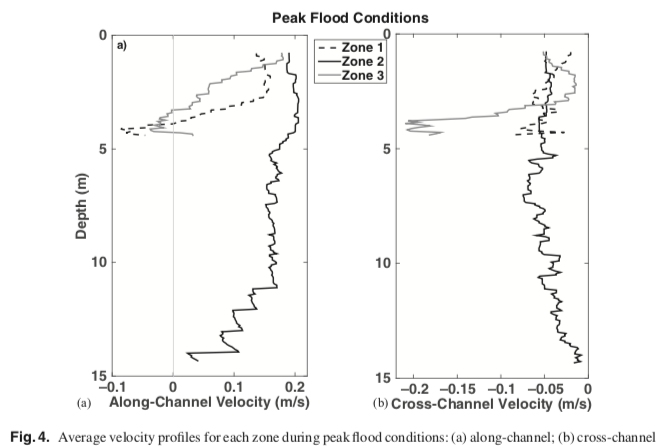Case Study: Near-channel velocities in the presence of a dredge spoil island
ABSTRACT: A vessel-mounted acoustic Doppler current profiler study focusing on channel-scale flow patterns in Galveston Bay near the Houston Shipping Channel and the artificial (dredge spoil) Mid-Bay Island is described. Winds of 5–7 m/s at 215–230° from N were present during data collection, which was conducted both in the deep channel (15 m) and along the shallow (3 m) open water near the channel. For both peak ebb and flood conditions, the tidal circulation forces flow in a direction opposing the wind, which appears to be due to a large-scale flow divergence forced by Mid-Bay Island. The strongest wind-opposing currents were measured closest to the island. During peak flood flow, the shape of the along-channel velocity profile for the open water upwind of the channel at Mid-Bay Island indicated uniform flow, and the salinity profile indicated a well-mixed water column. The near-island along-channel velocity profile showed a near-linear trend and the salinity profile indicated a stratified water column, suggesting that stratification affects the velocity despite the shallowness of the open water adjacent to the ship channel. During peak ebb flow, the near-island along-channel velocities were highly variable, and salinity profiles collected in both the open water and near-island showed stratification. During flood flows, Mid-Bay Island is the first of a chain of dredge-spoil islands encountered by the flow, whereas during the ebb the island is the last of the chain, suggesting that the observed flows are similar to leading and trailing edge effects in a developing horizontal boundary layer around the islands.


